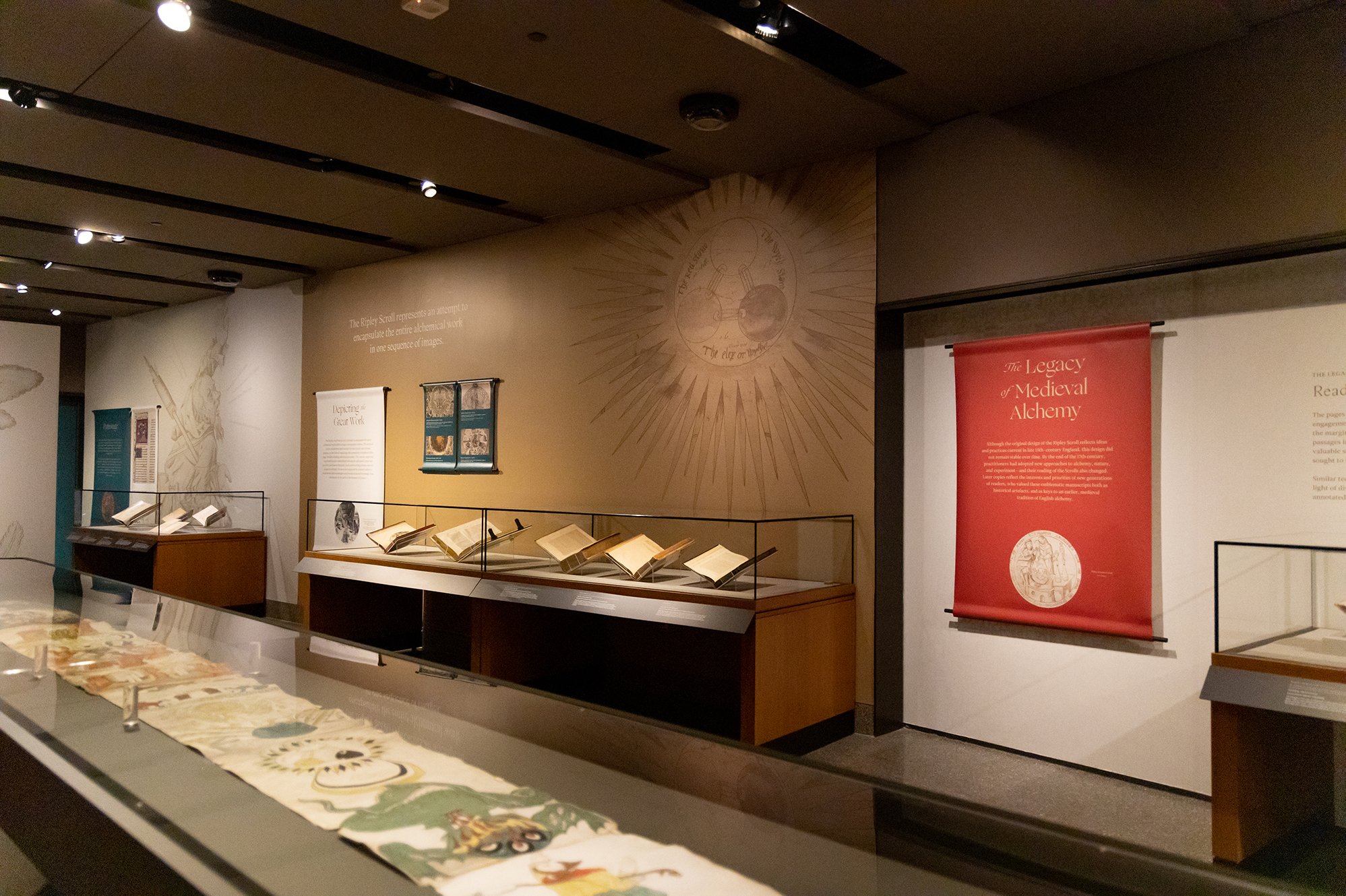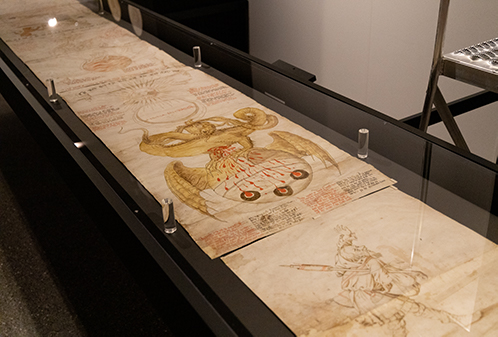"Through a Glass Darkly" showcases Ripley Alchemical Scrolls from Special Collections

The exhibition is open daily from noon to 6 p.m. in the Milberg Gallery, Firestone Library. Open to the public; vaccination self-attestation and sign-in required.
Guided tours of the exhibition will take place on the following Tuesdays (May 3, May 17, Jun 14, Jun 28, Jul 12) from 12:30 p.m. to 1 p.m.; Saturdays (May 7, May 21, Jun 4) from 1 p.m. to 1:45 p.m.; and, Sundays (May 8, May 22, Jun 5) from 1 p.m. to 1:45 p.m.
"Through a Glass Darkly: Alchemy and the Ripley Scrolls 1400-1700," a Princeton University Library (PUL) exhibition shows how European alchemists built on Greco-Egyptian, Islamic, and late medieval foundations to create a golden age of alchemy from the 15th century to the time of Sir Isaac Newton. The exhibition will be on display in the Ellen and Leonard Milberg Gallery, located in the Firestone Library lobby, from April 6 through July 17, 2022.

In pre-modern Europe, alchemy was a science of change. Medieval alchemists pursued medicinal elixirs to counter the public health crisis of their era—the bubonic plague—and attempted to transmute base metals into gold and silver to solve the region's precious metal shortage. They also sought to repair alchemy's old associations with fraud.
"To improve alchemy’s reputation, they presented their work as both a practical art and an ancient philosophical tradition," said Jennifer Rampling, exhibition curator and Princeton University associate professor of history. "One way of doing that was to disguise their secrets using very elaborate, allegorical language and obscure imagery. This fantastical imagery reached its peak with the Ripley Scrolls."
The Ripley Scrolls are spectacular, emblematic manuscripts, named after the famous English alchemist George Ripley. Two of the surviving 23 Scrolls are held by PUL. The Scrolls played a central role in the transmission of alchemical knowledge. The exhibition’s title, “Through a Glass Darkly” (from the New Testament, 1 Corinthians 13:12), underscores the importance of examining alchemy more deeply than a superficial and imperfectly reflected mirror image, as though seen through a looking-glass. Instead, one must engage with alchemy by examining its historical practices and allegorical imagery.
The exhibition was occasioned by PUL’s recent acquisition of a second Ripley Scroll, made in 1624 by the English herald George Smethley. It was acquired chiefly with endowment funds bequeathed to Princeton University by Robert H. Taylor (1909–85), class of 1930. The Library's other Ripley Scroll, dating from the 1590s, was a 1958 gift by Taylor as well.
____________________________________________________________________
The exhibition is open daily from noon to 6 p.m. in the Milberg Gallery, Firestone Library. Open to the public; vaccination self-attestation and sign-in required.
Guided tours of the exhibition will take place on the following Tuesdays (May 3, May 17, Jun 14, Jun 28, Jul 12) from 12:30 p.m. to 1 p.m.; Saturdays (May 7, May 21, Jun 4) from 1 p.m. to 1:45 p.m.; and, Sundays (May 8, May 22, Jun 5) from 1 p.m. to 1:45 p.m.
Learn more by exploring the accompanying digital exhibition and watching the tour video.
Join us for a PUL Author Talk with Jennifer Rampling, exhibition curator and author of "The Experimental Fire: Inventing English Alchemy 1300-1700"--on April 27 at 3 p.m.
Related: read the article in Nature written by Jennifer Rampling.
Media contact: Barbara Valenza, Director, Library Communications
Newsletter
Subscribe to Princeton University Library’s e-newsletter for the latest updates on teaching and research support, collections, resources, and services.
